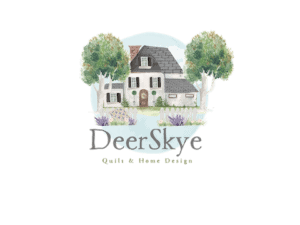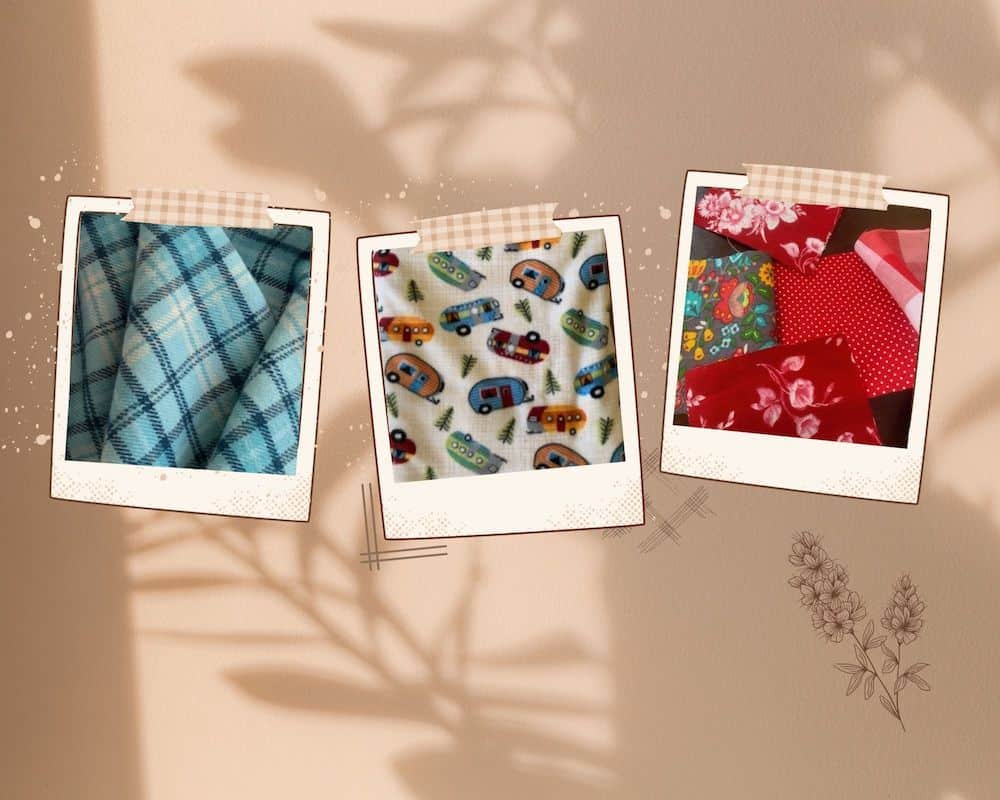When you make a quilt, you create a quilt topper out of quilt blocks. Your next step is to add fabric that will go on the back side of your quilt called quilt backing fabric. You place batting in between your quilt and your quilt backing fabric. This creates a quilt sandwich. Then you quilt and bind your quilt. If you need answers to the questions below, come along with me. You will find simple and useful answers here.
- What is the best quilt backing fabric to use for a quilt?
- How do you choose the right color for your quilt backing fabric?
- How do you measure quilt backing fabric?
- Can you mix fabrics when quilting? For example Cotton on the quilt topper and flannel or fleece for the quilt backing fabric?
- What to do if your quilt backing fabric isn’t wide enough?
- 10 ways to design your quilt backing.
When you finish a quilt topper, you want to make sure the quilt backing fabric enhances the pattern you have sewn on the front. It isn’t rocket science as they say but just follow a few tips and hints ( I won’t call them rules because they are not steadfast). You have some leeway to be creative and yet very confident in finding the right quilt backing fabric.
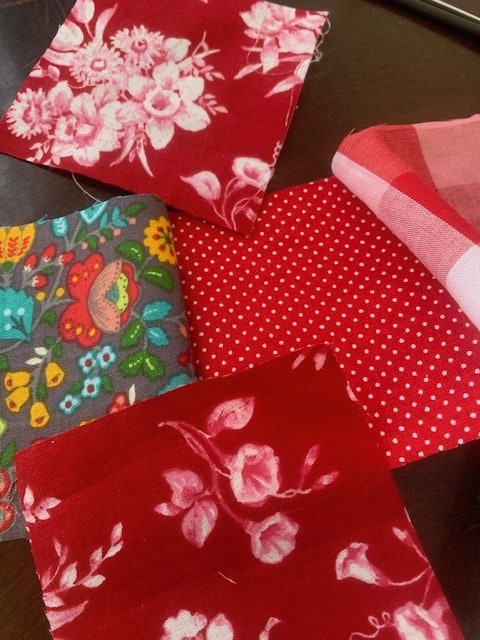
What is the best quilt backing fabric to use for a quilt?
- 100% High Quality Cotton
Most quilters hands down will say 100% high quality quilter’s medium weight cotton is the best choice for quilt backing fabric. Why? You may ask. This kind of fabric is sturdier in design and wearability so to speak. It will hold up better through use and washing. In other words, your quilt will last longer if cared for properly. I would say that is reason enough to keep in mind when buying fabric for a quilt top or quilt backing fabric.
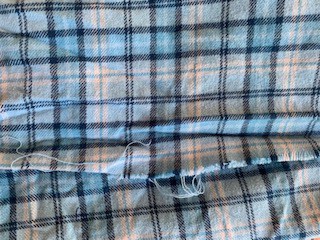
2. Flannel
If you choose to quilt with flannel, there are a few things to keep in mind. Because flannel usually shrinks when you wash it, it is a good idea to buy a little extra yardage to prevent your fabric from being too short or small you plan to use for your quilt backing fabric. Flannel also likes to fray when washed. Try putting it into a muslin bag or lingerie bag to wash it. Dry your flannel too. I tried this out and put my flannel in a muslin type bag. The bottom and top edges of my flannel wrinkled a bit so I will iron them lightly pressing gently so the heat doesn’t distort my plaid pattern on my flannel. I was happy with the washing and drying results of my high quality flannel.
I learned through the school of hard knocks about flannel shrinking. A rag quilt I made went from baby quilt size to doll quilt size. It was definitely worth crying and laughing over. Save yourself the same fate haha! High quality flannel is the best to use for quilt backing fabric. There are a lot of problems that can surface with cheap flannel fabric.
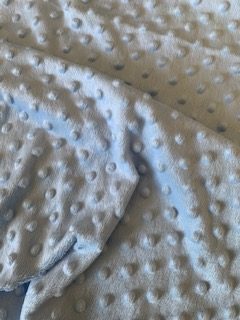
3. Minky
Minky is really soft and luxurious feeling. If your minky is thick enough, you might be able to just quilt your topper and backing fabric without the batting. That works well if you feel the blanket is heavy weight enough without it.
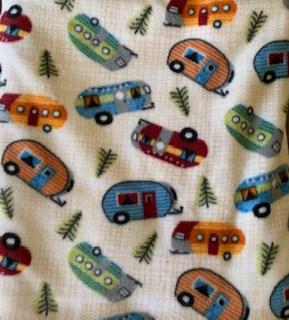
4. Fleece
Fleece is soft and cozy. You can use this as a quilt backing fabric too. There are a lot of designs and colors available for this type of fabric. Some of the pros of using this as a quilt backing fabric include, soft and cozy backing for your quilt. You won’t need batting for your quilt. Also it comes in wider pieces of fabric so you may not need to add to your quilt backing fabric.
How Do You Choose The Right Color For Your Quilt Backing?
Look at your quilt topper. What are the main colors you used to create your topper? Pull colors out of the colors you used on the topper. Coordinate those colors with your quilt blocks. If you come across a print that is mostly solid in color (it might have a stamped pattern on it but is overall one color) and you think it would enhance the quilt topper, give it a try. Hold the fabric you are considering for the quilt backing fabric next to the quilt top. What is your feeling about it. Do you love it? You can place darker or lighter versions of the colors on the top of your quilt on the back of your quilt.
How Do You Measure The Quilt Backing Fabric For Your Quilt?
How good are you at math because a mathematician I am not! However calculating how much fabric you need for your quilt backing fabric isn’t too hard to figure when you follow this method. Measure your quilt top length and double it or x by 2 + 12 to it. Then divide by 36″ to come up with the yardage you will need. Add 5 inches to each side because you want your quilt backer fabric to be wider than your quilt. If you plan to have it quilted by a long arm quilter, you will need the extra fabric around the edgeof your quilt.You will trim it up later.
Ta Da! Now was that hard? If you guesstimate while you are at the store shopping and don’t have your quilt equation with you, you get home and your fabric isn’t quite wide enough, you can always add some patchwork or sashing to each edge of your quilt. There are creative ways to solve your dilemma.
Mix And Match
It is possible to mix and match quilt topper with quilt backing fabric. What I mean is, if you have sewn high quality cotton quilt blocks together can you put fleece, minky, or flannel on the back of your quilt? The answer is yes. Just make sure washing and drying requirements coordinate if you mix and match fabrics. Sometimes this saves you money though because you won’t have to place batting inside your quilt as mentioned earlier. It is your quilt so that means it is your call on what you choose for your quilt backing fabric.
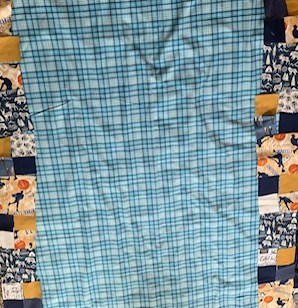
Fix Your Quilt Backing Fabric If It Isn’t Wide Enough
I bought some fabric recently for a throw quilt without measuring my quilt top first. I know not the best thing to do but it happens. I did the guesstimate thing and thought maybe a yard and a half maybe two yards would suffice. But alas and alack (whatever that means in Shakespeare talk haha) I was a bit short. I needed to widen each side of my quilt backing fabric. Solution to my problem…I decided to add a row of patchwork to each side. The fabrics I chose for the patchwork are fabrics that I used for my quilt topper. It is actually going to coordinate well with my quilt topper. It is a simple but effective fix. Other helpful ideas would be you buy more of the same fabric and just add to what you already bought and widen your quilt backing fabric or put a border around the edge of your main quilt backing.
10 Creative Ideas For Quilt Backing Fabric
Here are 10 ways to make your backing for your quilt. Get thinking because these ideas can help get your creative juices flowing.
- Sew a patchwork quilt backer using a variety of the colors that coordinate with the front of your quilt or create a patchwork quilt backer using the same fabrics you used on your quilt topper.
- Use a contrasting gingham, tiny floral, or small patterned fabric for your quilt backing that will compliment big quilt blocks on the front of your quilt.
- Sew solid fabric strips the length of your quilt to make your backing. Use jelly roll fabric to make your quilt come together quicker.
- Design a unique quilt look for the quilt back. You could still use colors that coordinate with the front but make the back of your quilt its own design just like the front.
- Purchase enough fabric in a solid color and use a bright color of thread and hand quilt or long arm quilt your quilt backing with a color that stands out and highlights the quilted pattern on the back.
- Add soft cozy flannel to your quilt topper for the backing fabric.
- Do an hombre colored quilt backing. Start on the left side with a light color and gradually add darker and darker fabrics of the same color so your quilt graduates in one color light to medium to dark.
- Find a panel fabric that you can sew strips or patchwork around the panel.
- Make one big log cabin block for your quilt backing fabric. You could use fabric to match the front of your quilt, use solids, or different fabric. It would make a beautiful backing for your quilt.
- Make large 12 x 12 blocks of two coordinating fabrics. Alternate them and make a really large patchwork pattern.
You might also like:
When you get ready to bind your quilt here is a very simple way to do it. What Is The Easiest Way To Bind A Quilt?
How about making your own quilt label to personalize your quilt. How Do You Make A Simple Quilt Label?
Wondering what tools you need to start quilting? What Are The Basic Tools Needed For Quilting?
Recent Posts
Do you need a quilt to give as a gift and need it like yesterday? Here is a fun quick quilt you can make in a day (maybe less) once you have your supplies. It features homemade raw edge, scrap back...
You know those orphan blocks you just can't bring yourself to throw away? They took some time to make but they just didn't fit in the quilt you were making? Well I've got a solution for using them. A...
